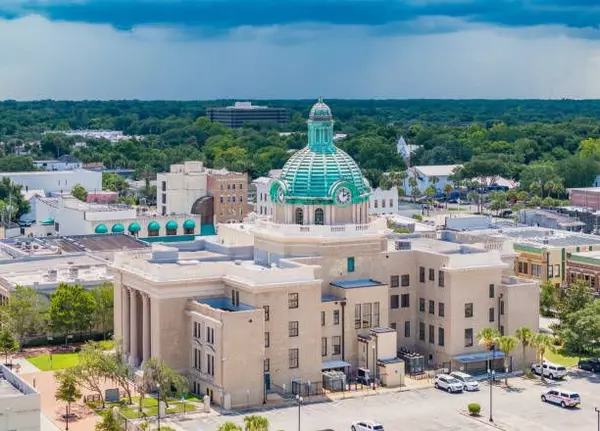Real Estate Interest Rates 2024

Real Estate Interest Rates 2024: A Deep Dive into the Future of Housing and Mortgages
Introduction
As we navigate through 2024, the landscape of real estate interest rates continues to evolve, significantly impacting the housing market and mortgage trends. Understanding these changes is crucial for homebuyers, sellers, and investors aiming to make informed decisions in this dynamic environment.
Understanding Real Estate Interest Rates
Interest rates are a critical component of the real estate market, influencing everything from mortgage affordability to property values. They represent the cost of borrowing money and are determined by various economic factors, including inflation, employment rates, and monetary policies.
Historical Overview of Interest Rates
To comprehend the current trends, it's essential to look at the historical context. Over the past decades, interest rates have fluctuated in response to economic cycles, policy decisions by the Federal Reserve, and global financial events. This historical perspective provides valuable insights into potential future movements.
Factors Influencing Interest Rates in 2024
Several factors are shaping the interest rate environment in 2024:
Economic Indicators: Key metrics such as inflation, GDP growth, and employment rates play a pivotal role in determining interest rates. Higher inflation often leads to higher rates to curb spending, while strong economic growth can increase demand for credit, pushing rates up.
Federal Reserve Policies: The Federal Reserve's monetary policies, including adjustments to the federal funds rate, significantly impact mortgage rates. In 2024, the Fed's actions to control inflation and support economic stability will be closely watched.
Global Market Trends: Global economic conditions, including geopolitical tensions and trade relationships, can influence interest rates. Events such as Brexit, trade wars, and international economic agreements can create ripple effects in the U.S. housing market.
Impact of Interest Rates on the Housing Market
Interest rates directly affect homebuyer affordability and housing demand. When rates are low, borrowing costs decrease, making it easier for buyers to finance their homes. Conversely, higher rates can dampen demand and slow down the housing market.
Mortgage Rates Forecast for 2024
The mortgage landscape in 2024 will likely feature varying trends for different types of loans:
Fixed-Rate Mortgages: These loans offer stability with a constant interest rate over the loan term. In 2024, fixed-rate mortgages are expected to remain popular due to their predictability.
Adjustable-Rate Mortgages: These loans have interest rates that adjust periodically based on market conditions. While they may offer lower initial rates, they come with the risk of future rate increases.
First-Time Homebuyers: This group may face unique challenges in 2024, including navigating higher rates and competitive housing markets. Tailored financial products and government programs can provide assistance.
Regional Variations in Interest Rates
Interest rates can vary significantly across different regions:
East Coast: Metropolitan areas like New York and Washington D.C. may experience higher rates due to strong demand and higher property values.
West Coast: Cities such as Los Angeles and San Francisco often see rate fluctuations influenced by the tech industry's economic health and housing supply constraints.
Midwest: Regions like Chicago and Detroit might have more stable rates, reflecting a balanced market with moderate demand and supply.
South: Areas such as Atlanta and Dallas could see competitive rates driven by population growth and economic development.
Strategies for Homebuyers in 2024
Homebuyers can adopt several strategies to navigate the 2024 interest rate environment:
Locking in Rates: Securing a mortgage rate early can protect buyers from future rate increases. Rate locks are typically available for 30 to 60 days.
Flexible Financing Options: Exploring different loan products, such as interest-only mortgages or loans with lower down payments, can provide more flexibility.
Refinance Opportunities: For existing homeowners, refinancing can be a viable option to take advantage of lower rates or switch from an adjustable-rate mortgage to a fixed-rate mortgage.
Real Estate Investment Considerations
Investors must carefully evaluate how interest rates impact their potential returns:
ROI Analysis: Higher interest rates can affect the return on investment (ROI) by increasing borrowing costs and reducing profit margins.
Rental Market Impact: Interest rates also influence rental yields. Higher borrowing costs can lead to higher rents, but they may also reduce tenant demand.
Long-Term vs Short-Term Investments: Investors should consider their time horizon. Short-term investments may be more sensitive to rate changes, while long-term investments can benefit from overall market appreciation.
Impact on Home Sellers
Sellers need to adapt to the interest rate environment to attract buyers:
Pricing Strategies: Competitive pricing becomes crucial when rates rise, as buyers' purchasing power decreases.
Market Timing: Understanding market cycles and timing the sale can maximize profits. Selling during periods of low rates can attract more buyers.
Negotiation Tactics: Sellers may need to be more flexible in negotiations, offering concessions or incentives to close deals.
Commercial Real Estate and Interest Rates
The commercial real estate sector is also affected by interest rate changes:
Office Spaces: Demand for office space can be sensitive to economic conditions and interest rates, impacting leasing activity and rental rates.
Retail Properties: Consumer spending and retail sales, influenced by interest rates, affect the viability of retail properties.
Industrial Real Estate: Industrial properties, often driven by logistics and e-commerce trends, may experience less direct impact from interest rates but are still influenced by broader economic conditions.
Government Policies and Their Effects
Government policies can significantly impact real estate interest rates:
Tax Incentives: Policies that offer tax breaks or incentives for homebuyers can stimulate demand, affecting interest rates.
Housing Programs: Government-backed programs, such as FHA loans, provide more accessible financing options, impacting overall market dynamics.
Regulatory Changes: Changes in lending regulations and financial industry oversight can influence the availability and cost of credit.
Expert Predictions for 2024
Experts offer valuable insights into the future of interest rates:
Economist Insights: Leading economists predict that interest rates may see moderate increases in 2024 as the economy continues to recover from past disruptions.
Real Estate Analysts: Analysts highlight the importance of staying informed about market trends and being prepared for rate fluctuations.
Market Trends: Trends such as urbanization, remote work, and technological advancements will shape the real estate market in 2024.
Common Misconceptions About Interest Rates
Addressing common misconceptions can help consumers make better decisions:
Fixed vs Variable Rates: Understanding the differences between fixed and variable rates is crucial for choosing the right mortgage product.
Market Volatility: Interest rates can be volatile, but long-term trends are often more predictable.
Rate Predictions: While forecasts can provide guidance, predicting exact rate movements is challenging and subject to many variables.
Interest Rates and Economic Growth
Interest rates are closely linked to overall economic health:
GDP Impact: Higher rates can slow down economic growth by increasing borrowing costs for businesses and consumers.
Employment Rates: Changes in interest rates can affect job creation, with higher rates potentially leading to slower employment growth.
Consumer Spending: Interest rates influence consumer spending habits, impacting everything from housing purchases to retail sales.
How to Prepare for Interest Rate Changes
Preparing for interest rate changes involves proactive financial planning:
Financial Planning: Creating a budget that accounts for potential rate increases can help manage expenses.
Market Monitoring: Keeping an eye on economic indicators and market trends can provide early warnings of rate changes.
Risk Management: Diversifying investments and maintaining an emergency fund can mitigate the impact of rate fluctuations.
Technological Innovations and Real Estate Financing
Technology continues to revolutionize real estate financing:
Digital Mortgages: Online mortgage platforms streamline the application process, making it faster and more convenient.
Fintech Solutions: Financial technology companies offer innovative products and services, such as automated investment tools and peer-to-peer lending.
Online Marketplaces: Real estate marketplaces provide access to a wide range of financing options and property listings.
Environmental Factors and Interest Rates
Environmental considerations are becoming increasingly important in real estate:
Climate Risks: Properties in areas prone to climate risks, such as floods or wildfires, may face higher insurance costs and interest rates.
Sustainable Investments: Green mortgages and eco-friendly building practices are gaining popularity, supported by favorable financing terms.
Green Mortgages: Loans that support energy-efficient homes or sustainable developments can offer lower interest rates and additional incentives.
The Role of Banks and Lending Institutions
Banks and lending institutions play a critical role in the real estate market:
Loan Products: A variety of loan products cater to different borrower needs, from conventional mortgages to jumbo loans.
Interest Rate Policies: Banks' policies on setting interest rates can impact the overall market, with competitive rates attracting more borrowers.
Customer Support: Quality customer service and financial advice help borrowers navigate the complexities of securing a mortgage.
Impact of Interest Rates on Real Estate Development
Interest rates influence real estate development projects:
Construction Costs: Higher interest rates can increase the cost of financing construction projects, affecting project feasibility.
Project Financing: Developers need to secure favorable financing terms to maintain profitability and meet market demand.
Market Demand: Interest rate trends affect demand for new developments, with higher rates potentially slowing down project launches.
Interest Rates and the Rental Market
The rental market is also influenced by interest rate changes:
Rent Prices: Higher interest rates can lead to higher rents as landlords pass on increased borrowing costs to tenants.
Tenant Demand: Rental demand may increase if higher interest rates make homeownership less affordable.
Landlord Strategies: Landlords may need to adjust their strategies, including rent pricing and lease terms, to attract and retain tenants.
Case Studies: Interest Rate Impacts
Examining case studies provides real-world insights:
Major Cities: Interest rate trends in cities like New York, Los Angeles, and Chicago reveal diverse impacts on urban real estate markets.
Rural Areas: Rural markets may experience different effects, with lower demand and more stable property values.
International Comparisons: Comparing U.S. interest rates with those in other countries highlights global market dynamics and potential investment opportunities.
FAQs
How do interest rates affect home affordability? Interest rates directly impact the cost of borrowing money for a mortgage. Lower rates make monthly payments more affordable, increasing home affordability. Conversely, higher rates raise borrowing costs, reducing affordability.
What is the difference between fixed and adjustable-rate mortgages? Fixed-rate mortgages have a constant interest rate for the loan term, providing stability and predictability. Adjustable-rate mortgages (ARMs) have rates that adjust periodically based on market conditions, potentially offering lower initial rates but with the risk of future increases.
How can homebuyers lock in interest rates? Homebuyers can lock in interest rates by securing a rate lock with their lender, which typically lasts for 30 to 60 days. This protects them from rate increases during the lock period.
What factors should investors consider in a high-interest rate environment? Investors should analyze the impact of higher borrowing costs on their return on investment (ROI), assess rental market dynamics, and consider long-term versus short-term investment strategies.
How do interest rates influence the commercial real estate market? Interest rates affect the cost of financing commercial properties, influencing leasing activity, rental rates, and overall demand for office, retail, and industrial spaces.
What government policies impact real estate interest rates? Government policies, such as tax incentives, housing programs, and regulatory changes, can influence interest rates by affecting market demand and the availability of credit.
Conclusion
Real estate interest rates in 2024 will continue to shape the housing market, influencing home affordability, mortgage options, and investment strategies. By understanding the factors driving these rates and staying informed about market trends, homebuyers, sellers, and investors can navigate the complexities of the real estate landscape with confidence.
Suggestions for Inbound and Outbound Links
Inbound Links:
- Link to articles on home buying tips.
- Link to mortgage rate calculators.
- Link to guides on refinancing a mortgage.
Outbound Links:
- Link to the Federal Reserve's official site for current interest rate policies.
- Link to economic analysis articles on major financial news websites.
- Link to real estate investment forums for community insights.
Categories
Recent Posts











"Molly's job is to find and attract mastery-based agents to the office, protect the culture, and make sure everyone is happy! "

